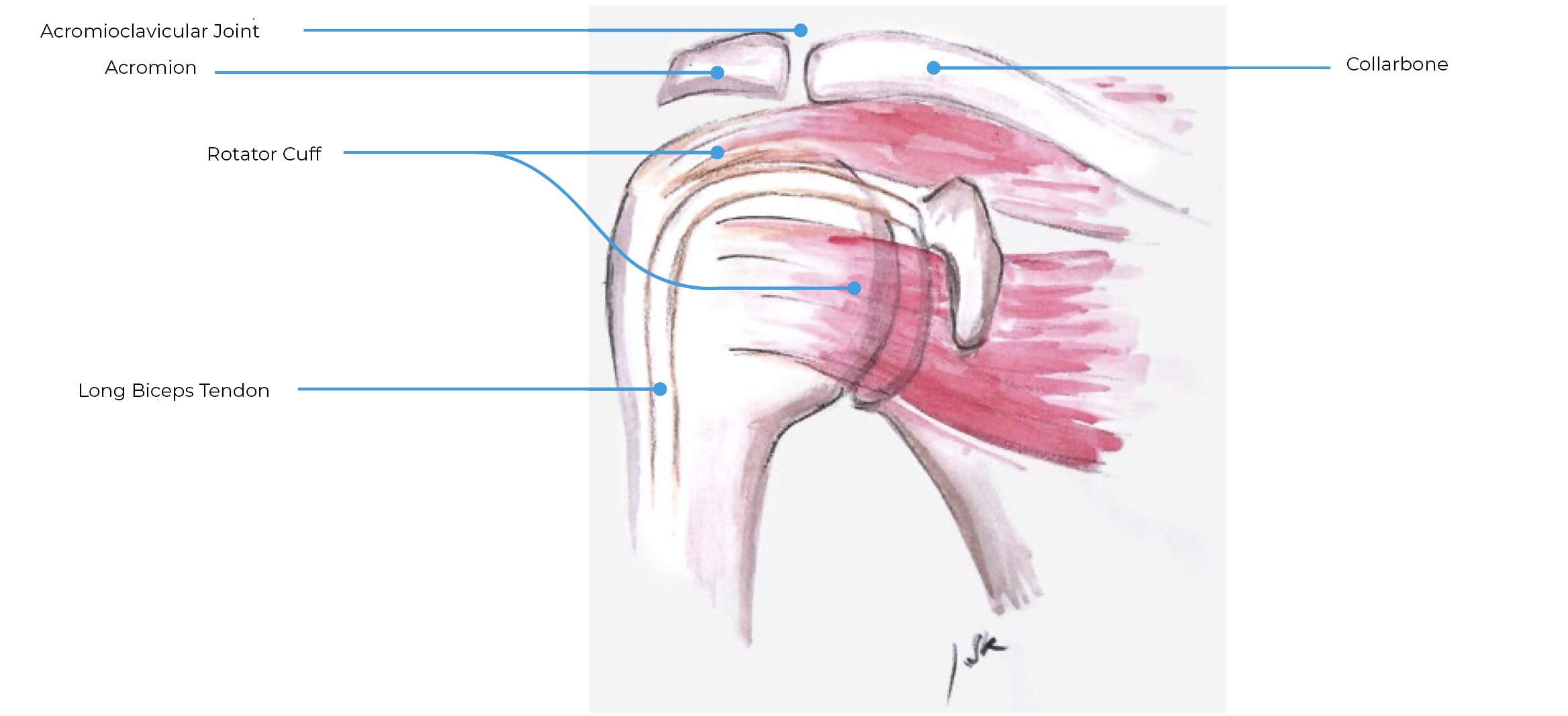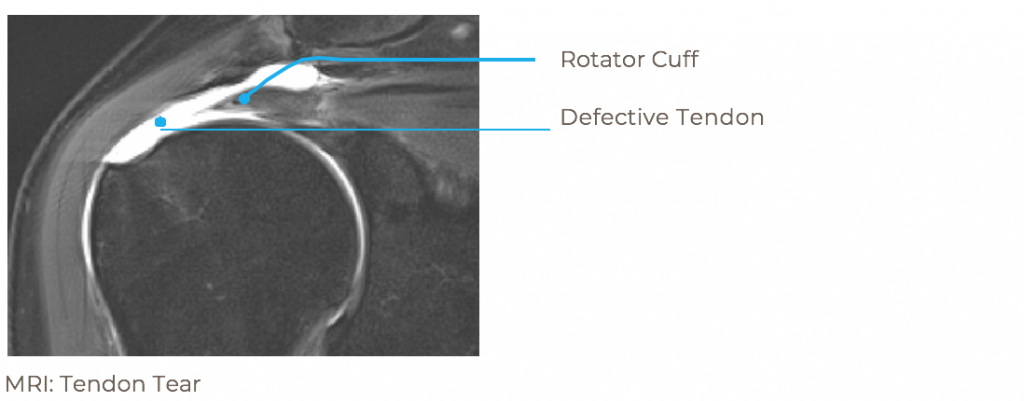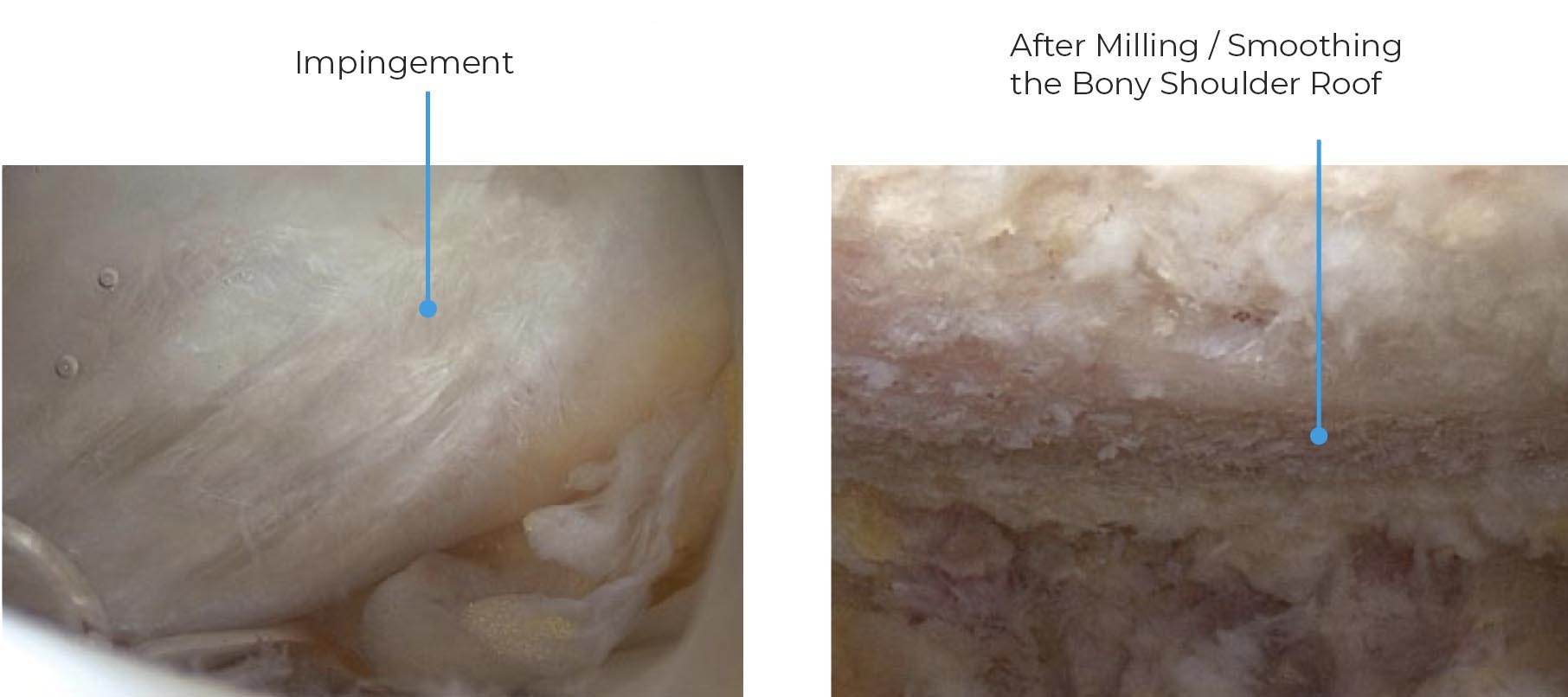- Home
- Fields of expertise
- Shoulder and Elbow Surgery
- Arthroscopic Rotator Cuff Repair
Arthroscopic Rotator Cuff Repair
ANATOMY OF THE SHOULDER

SYMPTOMS
Muscle imbalance or degenerative changes on the shoulder roof (acromion) can lead to impingement of the rotator cuff. An AC Joint osteoarthritis can also be involved. If this situation persists for a long time, it can damage your rotator cuff.

The result is pain when lifting the arm and also often pain at night. Sometimes you can also have pain at rest. You will typically feel the pain in the upper arm on the side. An acute injury to the rotator cuff can also result from an accident (e.g. fall). A loss of strength is often noticeable.
CLINICAL EXAMINATION
A thorough diagnosis of your shoulder with a clinical examination is a key point. Checking the mobility as well as the strength of the rotator cuff is usually helpful to make an accurate diagnosis. The diagnosis can then be confirmed and the injury made visible by means of targeted x-rays and an MRI (magnetic resonance imaging) scan.


TREATMENT
Depending on the extent and type of origin of your injury (acute traumatic/ chronic), your age and level of activity, sometimes a surgical approach with rotator cuff repair will be discussed. Sometimes a rotator cuff tear can be treated conservatively using physiotherapy.
SURGERY
As a rule, simple impingement as well as lesions and tears of the rotator cuff can be arthroscopically treated through small skin incisions (keyhole technique). The bony spur that produces impingement is removed using a special device.

For the rotator cuff repair so called anchors are used, which are inserted into the humeral head. The sutures attached to it are passed through the tendon, knotted and tensioned downwards so that the tendon is pressed back onto its actual attachment and can heal.


If the long biceps tendon is also affected by the injury, either a tenotomy alone or a tenodesis (fixation) must be performed via an additional small skin incision on the upper arm. In case a tenodesis is needed, the long biceps tendon is sutured to the tendon attachment of the pectoralis major muscle.

A tenotomy alone results in a so-called Popeye-Muscle, a small protrusion on the upper arm above the elbow. This is usually not a disadvantage for your shoulder mobility and strength.
RISKS
We treat you with experienced surgeons. However, no intervention is free from risks or possible complications. The common risks are listed here:
- Impaired healing/re-tear
- Infection
- Injury to blood vessels and nerves
- Temporary shoulder stiffness (Frozen Shoulder)
HOSPITAL STAY
Your arm will be immobilized in a sling or vest for the first six weeks after surgery. From the first day on, you will take up passive and/or supported movement exercises with our physiotherapists and carry them out independently. The hospital stay depends primarily on your pain and, based on experience, lasts between 2 and 3 nights.
DISCHARGE
After leaving, the physiotherapy will continue uninterrupted. This is usually done on an outpatient basis. The stitches are removed by your family doctor after approximately 10 – 12 days. After the first check up in our consultation after 6 weeks, the shoulder vest can be omitted. Movement therapy is continuously increased. It is usually possible to drive a car after about 6 – 10 weeks. After about 3 – 4 months, you should be able to strain your arm with moderate strength in daily tasks. Physiotherapy to improve mobility and strength is usually continued 3 – 6 months after the procedure.
Should you have any further questions after our consultation and after
reading this brochure, we will be at your disposal.
pdf for download: 1. Arthroscopic Rotator Cuff Repair
